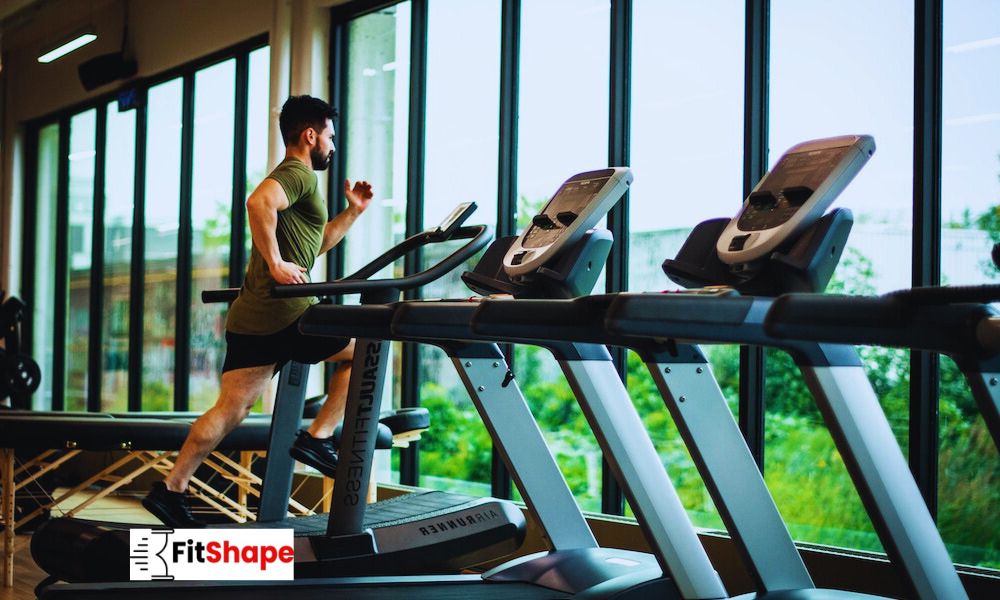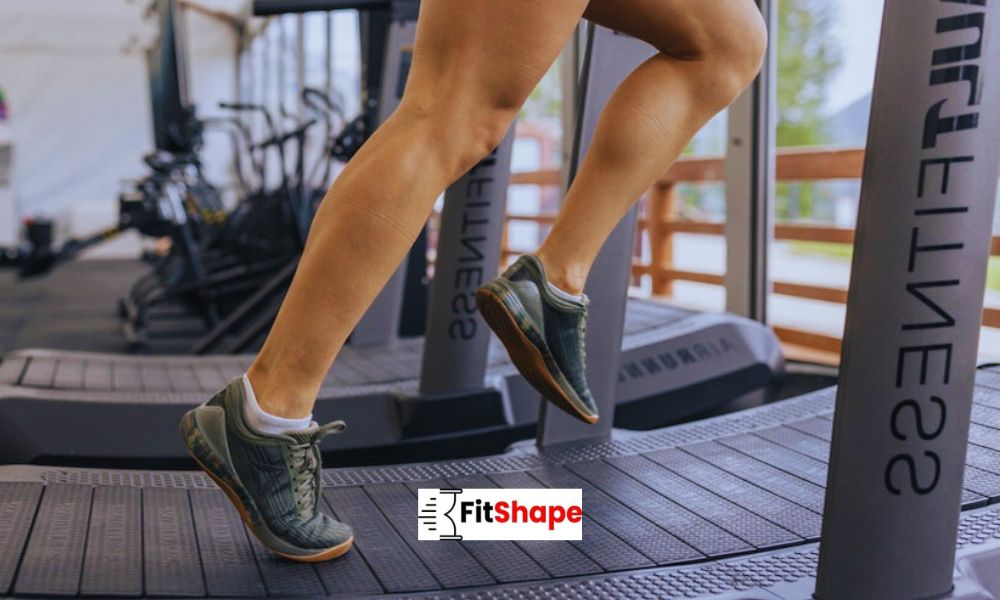Have you ever wondered just how fast treadmills can go? With so many different models and brands on the market, it can be difficult to know what to expect. Are you missing out on a potential workout challenge by not investing in a faster treadmill?
Treadmills are a popular choice for at-home exercise and for good reason. They offer a convenient way to get in your daily cardio without having to leave your house. However, not all treadmills are created equal. Some models may be better suited for walking or light jogging, while others are designed for serious runners looking to push their limits.
If you’re in the market for a new treadmill, or simply curious about how fast they can really go, it’s important to understand the different factors that can impact speed. From motor power to belt size, there are a variety of features that can impact a treadmill’s maximum speed.
In this article, we’ll explore the different factors that can impact treadmill speed, and answer the question: how fast can treadmills really go?
How Fast Can Treadmills Really Go?
When it comes to treadmills, one of the most important questions is, “How fast can they go?” Treadmill speed is measured in kilometres per hour (kph) and can vary depending on the type of treadmill you are using.
Commercial treadmills, on the other hand, can reach speeds of up to 24 kph and are often used in high-intensity interval training (HIIT) workouts. For manual treadmills, they don’t have a maximum speed as it depends on how fast you can run – the treadmills are powered by your own movement.
The speed of standard treadmills typically ranges from 0.5 to 12 kph, while some of the highest-end commercial models can reach speeds of up to 25 kph. The average gym treadmill usually has a top speed of around 19 kph.
It is important to note that the maximum speed of a treadmill should not necessarily be the goal for everyone. The ideal speed for an individual will depend on their fitness level, fitness goals, and overall health. For steady-state cardio, most people will aim for an average speed of anywhere between 5-9 kph.
Regardless of the speed, it is important to choose a treadmill that meets your needs and fits within your budget. From manual to motorised treadmills, there are a variety of options available, each with its own pros and cons.

Motorised Treadmills
Motorised treadmills are a popular option for those looking to increase their fitness levels through indoor running or walking. There are different types of motorised treadmills available, each offering a unique set of features and speed capabilities.
One common feature to consider when looking at motorised treadmills is their maximum speed. While some may offer a maximum speed of 12 kph, others can reach up to 24 kph. It’s essential to choose a treadmill that suits your fitness levels and goals, as well as the intensity of your workouts.
Several factors can affect the speed and performance of motorised treadmills. One of these is horsepower (HP), which refers to the power output of the treadmill’s motor.
A higher horsepower rating means a more powerful motor, enabling the treadmill to operate at higher speeds and maintain smoother performance. Another factor is motor output, which can impact the overall experience of using the treadmill.
When comparing motorised treadmills, it’s important to consider both the maximum speed and horsepower to ensure the treadmill can meet your specific needs.
To help with this, here are some examples of home and commercial treadmills with varying speed settings and horsepower ratings:
| Treadmill Model | Maximum Speed (kph) | Horsepower (HP) |
| NordicTrack C990 | 22 | 3.0 |
| ProForm Pro 2000 | 22 | 3.5 |
| Bowflex BXT226 | 20 | 3.75 |
| Precor TRM 885 | 26 | 4.0 |
| Life Fitness 95T | 23 | 4.0 |
Choosing a treadmill with the appropriate speed and power can positively affect the overall treadmill experience, enabling users to achieve their fitness goals faster and more efficiently.
Commercial treadmills are often built to withstand more extended consistent use and have higher speed and horsepower ratings than most home treadmills.
However, they may also be more expensive. So, it’s essential to consider your fitness needs and budget to select the best treadmill for you.
Budget Treadmills
Treadmills under $1000 generally provide lower maximum speeds of around 14 kph, with motor power that’s suitable for walking rather than running exercises.
Here are some popular budget treadmill choices in each price range:
- Lifespan Pursuit Treadmill (top speed: 14 kph, 2.25 CHP Everdrive motor)
- LSG Pacer M4 Treadmill (top speed: 12 kph, 1.5 CHP motor)
- Sardine Sport T20 Treadmill (top speed: 14 kph, 3.0 CHP motor)
When choosing a budget treadmill, it’s important to consider your fitness goals and exercise preferences. With the above options in mind, you can find a treadmill that meets your speed and motor power requirements without breaking the bank.
Mid-Range Treadmills
Mid-range treadmills are priced between budget and high-end models. These treadmills offer motorised belts and a range of speed (kph) and incline settings to suit different fitness levels and objectives.
One of the main advantages of mid-range treadmills is that they come with various useful features. For example, preset workout programs, digital display screens, and pulse rate monitors are among the features commonly included with these models. These features can improve the quality of your exercise and make the treadmill experience more enjoyable.
Another aspect to consider when selecting a mid-range treadmill is the level of cushioning. While some models come with high levels of cushioning, others may not offer as much. It’s important to find a model with sufficient cushioning to reduce the impact on your joints and prevent injury.
Mid-range treadmills generally have weight capacity and size similar to higher-end models, making them suitable for a wide range of users. Here are some popular mid-range treadmill options:
Overall, mid-range treadmills offer a balance of affordability, functionality, and features that make them an attractive option for users with varying fitness levels and goals.
High-End Treadmills
High-end treadmills, also known as luxury or commercial-grade treadmills, are designed for serious athletes and fitness enthusiasts who have high-performance goals and are willing to pay a premium. These models come with a wide range of features and capabilities that set them apart from mid-range or budget models.
One of the key features of high-end treadmills is their advanced technology. For example, luxury models often come with large touch-screen displays, pre-programmed workouts, live streaming and on-demand classes, and compatibility with fitness apps and wearable devices. They also tend to have more powerful and durable motors, which allow for higher speeds and longer workouts.
In terms of fitness goals, high-end treadmills are designed to meet the demands of elite athletes, including runners and sprinters. They have faster maximum speeds and steeper incline capabilities than mid-range models, allowing for high-intensity interval training (HIIT) and other challenging workouts. Many high-end models feature advanced cushioning and shock absorption systems, which can reduce strain on the joints during long or intense sessions.
Here are some popular high-end treadmill options:
- NordicTrack X22i Incline Trainer (top speed: 22 kph, 4.0 CHP motor, 40% incline)
- Proform Pro 2000 Treadmill (top speed: 22 kph, 3.5 CHP motor, 12% incline)
- Adidas T-23 Treadmill (top speed: 20 kph, 4.5 HP motor, 15% incline)
Overall, high-end treadmills are designed to cater to the needs of the most demanding athletes and fitness enthusiasts. While they come at a premium, they offer a range of advanced features and capabilities that can help users achieve their fitness goals and get the most out of their workouts.

Frequently Asked Questions (FAQs) About Treadmill Speeds
Treadmills are a popular fitness equipment option for those who want to get a good workout indoors. However, speed can be a confusing factor for many people, especially beginners. Here are some frequently asked questions about treadmill speeds:
1. How fast should I go on a treadmill?
The ideal speed on a treadmill depends on your fitness level, goals, and the type of workout you’re doing. For steady-state cardio, a brisk walk or a light jog at a speed of 5-7 kilometres per hour is recommended. For high-intensity interval training (HIIT), a sprint-like pace of 11-16 kilometres per hour may be appropriate. Ultimately, it’s important to listen to your body and work at a pace that is comfortable for you.
2. What factors affect how fast I can go on a treadmill?
Your fitness level, age, weight, and overall health can affect your treadmill speed. Additionally, the type of treadmill, incline, and workout program can all have an impact on your ability to go faster.
3. How fast can treadmills go?
The maximum speed of a treadmill can vary depending on the type and model. Motorised treadmills usually have a maximum speed of 25 kilometres per hour, while manual treadmills have no maximum speed as it is dependent on human power.